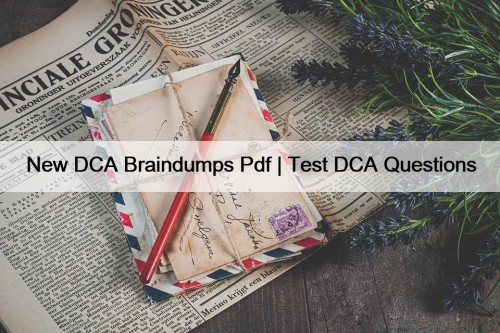Most Popular
 Free PDF Quiz ISC First-grade CISSP - Valid Certified Information Systems Security Professional (CISSP) Exam Materials
Free PDF Quiz ISC First-grade CISSP - Valid Certified Information Systems Security Professional (CISSP) Exam Materials
Elaborately designed and developed CISSP test guide as well as ...
 New DCA Braindumps Pdf | Test DCA Questions
New DCA Braindumps Pdf | Test DCA Questions
BONUS!!! Download part of VCEEngine DCA dumps for free: https://drive.google.com/open?id=1pn415vMP-I01F-DLQFddgyKoMw2h1JVCOur ...
 PAL-EBM Test Braindumps: Professional Agile Leadership - Evidence Based Management (PAL-EBM) & PAL-EBM Exam Guide & PAL-EBM Study Guide
PAL-EBM Test Braindumps: Professional Agile Leadership - Evidence Based Management (PAL-EBM) & PAL-EBM Exam Guide & PAL-EBM Study Guide
Every practice exam or virtual exam of the PAL-EBM study ...



KCNA Test Braindumps - KCNA Pass-Sure Torrent & KCNA Test Questions

Our KCNA exam questions are compiled by experts and approved by the professionals with years of experiences. The language is easy to be understood which makes any learners have no obstacles and our KCNA guide torrent is suitable for anyone. The content is easy to be mastered and has simplified the important information. Our KCNA test torrents convey more important information with less questions and answers and thus make the learning relaxing and efficient. With our KCNA exam questions, your will pass the KCNA exam with ease.
PracticeDump customizable practice exams (desktop and web-based) help students know and overcome their mistakes. The customizable Linux Foundation KCNA practice test means that the users can set the Questions and time according to their needs so that they can feel the real-based exam scenario and learn to handle the pressure. The updated pattern of Linux Foundation KCNA Practice Test ensures that customers don't face any real issues while preparing for the test.
Updated Dumps KCNA Collection - Find Shortcut to Pass KCNA Exam
You will receive KCNA exam materials immediately after your payment is successful, and then, you can use KCNA test guide to learn. Everyone knows that time is very important and hopes to learn efficiently, especially for those who have taken a lot of detours and wasted a lot of time. Once they discover KCNA study braindumps, they will definitely want to seize the time to learn. However, students often purchase materials from the Internet, who always encounters a problem that they have to waste several days of time on transportation, especially for those students who live in remote areas. But with KCNA Exam Materials, there is no way for you to waste time. The sooner you download and use KCNA study braindumps, the sooner you get the certificate.
Linux Foundation KCNA Certification is a valuable credential for IT professionals who want to demonstrate their expertise in cloud-native technologies. With a wide range of study resources available and a vendor-neutral approach, the exam is an attractive option for professionals who work with different cloud platforms and want to showcase their skills in a way that is recognized across the industry.
Linux Foundation Kubernetes and Cloud Native Associate Sample Questions (Q191-Q196):
NEW QUESTION # 191
You are setting up a Kubernetes cluster with a large number of pods. You want to optimize the network communication between these pods for high performance and minimal latency. Which Kubernetes networking option would you consider for this scenario?
- A. Canal
- B. Calico
- C. kube-proxy
- D. Weave Net
- E. Flannel
Answer: B,D
Explanation:
Calico and Weave Net are known for their performance and scalability in Kubernetes environments. Calico provides efficient routing and optimized network communication, making it suitable for large-scale deployments. Weave Net is a popular choice for its simplicity scalability, and performance in handling heavy network traffic. While Flannel and Canal are also Kubernetes networking solutions, they may not be as optimized for large-scale deployments as Calico and Weave Net
NEW QUESTION # 192
Explain the difference between a Kubernetes Deployment and a ReplicaSet. When would you use each of these resources?
- A. Deployment is a high-level resource that manages the lifecycle of ReplicaSets, while ReplicaSet is a low-level resource that manages a set of Pods with the same template.
- B. Deployment and ReplicaSet are interchangeable, and both manage the lifecycle of Pods with the same template.
- C. Deployment is a low-level resource that manages the lifecycle of ReplicaSets, while ReplicaSet is a high-level resource that manages a set of Pods with the same template.
- D. ReplicaSet is a low-level resource that manages the lifecycle of Deployments, while Deployment is a high-level resource that manages a set of Pods with the same template-
- E. ReplicaSet is a high-level resource that manages the lifecycle of Deployments, while Deployment is a low-level resource that manages a set of Pods with the same template.
Answer: A
Explanation:
A Deployment is a high-level resource that manages the lifecycle of ReplicaSets. It defines the desired number of replicas, the pod template, and handles updates and rollbacks. A ReplicaSet is a low-level resource that manages a set of Pods with the same template. It ensures that the desired number of Pods are running based on the defined selector and ensures that pods are replaced when needed. You would use a Deployment for managing updates, rollbacks, and scaling of your applicatiom You would use a ReplicaSet if you only need to manage a set of Pods with the same template and don't require the features provided by a Deployment.
NEW QUESTION # 193
Consider a Kubernetes deployment where you have a microservice responsible for user authentication. You want to ensure that any communication to this service is encrypted and secure. What Kubernetes feature or open standard can help achieve this?
- A. Pod Security Policies (PSPs)
- B. Open Policy Agent (OPA)
- C. NetworkPolicy
- D. TLS/SSL
- E. Kubernetes RBAC
Answer: D
Explanation:
TLS/SSL is a standard protocol for encrypting communication between applications. You can configure your authentication service and its clients to use TLS/SSL to ensure secure communication between them. While other options like PSPs, NetworkPolicy, and RBAC are related to security, they don't specifically address the encryption aspect of communication-
NEW QUESTION # 194
You have a Kubernetes cluster with multiple applications deployed. Each application is instrumented to emit logs, metrics, and traces. You want to use a single dashboard to visualize the performance of all applications in a unified view. What are the possible approaches to achieve this?
- A. Use Prometheus to aggregate metrics from all applications and create a single dashboard.
- B. Use a custom application to collect and aggregate data from Prometheus, Jaeger, and Loki, and then visualize the data on a custom dashboard.
- C. Use Grafana to create a single dashboard that queries data from Prometheus and Jaeger.
- D. Configure Kubernetes to forward logs, metrics, and traces to a centralized observability platform like CloudWatch or Stackdriver.
- E. Use Loki for log aggregation and create a single dashboard in Grafana to visualize logs, metrics, and traces.
Answer: A,B,C,D,E
Explanation:
All of the provided options can contribute to achieving a unified dashboard for visualizing the performance of multiple applications. Each option has its strengths and weaknesses: A: Use Prometheus to aggregate metrics from all applications and create a single dashboard. Prometheus is a powerful tool for collecting and aggregating metrics. You can use Prometheus's query language to fetch data from multiple applications and create a centralized dashboard in Grafana or a custom application. B: Use Grafana to create a single dashboard that queries data from Prometheus and Jaeger. Grafana is a popular dashboarding tool that can visualize data from multiple sources. It can query metrics from Prometheus and tracing data from Jaeger to create a unified view. C: Use Loki for log aggregation and create a single dashboard in Grafana to visualize logs, metrics, and traces. Loki is a log aggregation system that can collect logs from various sources, including Kubernetes. By integrating Loki with Grafana, you can visualize logs, metrics, and traces on a single dashboard. D: Use a custom application to collect and aggregate data from Prometheus, Jaeger, and Loki, and then visualize the data on a custom dashboard. You can build a custom application to collect data from Prometheus, Jaeger, and Loki and then create a custom dashboard using a framework like React or Vue.js. This allows you to have full control over the data aggregation and visualization process. E: Configure Kubernetes to forward logs, metrics, and traces to a centralized observability platform like CloudWatch or Stackdriver. Cloud-based observability platforms like Amazon CloudWatch or Google Stackdriver provide a centralized platform for collecting, aggregating, and visualizing data from multiple applications. These platforms often have pre- built dashboards and alerting capabilities, making it easy to monitor and analyze data from different applications in a unified view. The best approach depends on your specific needs, resources, and preferred tools. You can choose a combination of these options to meet your requirements.
NEW QUESTION # 195
Your Kubernetes cluster has a limited number of nodes, and you need to efficiently utilize those resources. You are deploying a highly scalable web application with multiple pods. What Kubernetes concept can help you optimize resource allocation and ensure pods are scheduled across all available nodes?
- A. Tolerations
- B. PodAntiAffinity
- C. ResourceQuota
- D. Taints
- E. NodeSelector
Answer: A,B,D,E
Explanation:
These concepts help you optimize resource allocatiom 1 - NodeSelector Allows you to specify labels on nodes and match those labels in your pod definitions, ensuring pods are scheduled on nodes with desired characteristics. 2. PodAntiAffnity: Prevents pods from being scheduled on the same node or even within the same zone, promoting distribution across nodes. 3- Tolerations: Allow pods to tolerate taints applied to nodes. Taints are used to mark nodes as unsuitable for certain pods unless those pods have the corresponding tolerances. 4. Taints: Mark nodes with specific characteristics, preventing pods from scheduling on those nodes unless they have tolerations for those taints. ResourceQuota restricts resources at a namespace level, but not node-level scheduling.
NEW QUESTION # 196
......
To do this you just need to enroll in Linux Foundation KCNA exam and strive hard to pass the Kubernetes and Cloud Native Associate (KCNA) exam with good scores. However, you should keep in mind that the Linux Foundation KCNA certification exam is different from the traditional exam and always gives taught time to their candidates. But with proper Kubernetes and Cloud Native Associate (KCNA) exam preparation, planning, and firm commitment can enable you to pass the challenging Kubernetes and Cloud Native Associate (KCNA) exam.
KCNA Valid Test Duration: https://www.practicedump.com/KCNA_actualtests.html
- Linux Foundation - KCNA –Professional Dumps Collection 💃 Go to website [ www.prep4sures.top ] open and search for ⇛ KCNA ⇚ to download for free 🌠Trustworthy KCNA Practice
- KCNA Brain Dumps 🔤 New KCNA Test Pattern 👿 KCNA Latest Study Questions 🎣 Easily obtain ( KCNA ) for free download through [ www.pdfvce.com ] 🗼Test KCNA Simulator Fee
- Linux Foundation KCNA Exam | Dumps KCNA Collection - Instant Download of KCNA Valid Test Duration 🟫 Simply search for ▶ KCNA ◀ for free download on { www.passtestking.com } 🐧Test KCNA Simulator Fee
- Pass KCNA Exam with Updated Dumps KCNA Collection by Pdfvce 🕠 Open website 【 www.pdfvce.com 】 and search for ( KCNA ) for free download 🚦KCNA Latest Study Questions
- Dumps KCNA Collection and Linux Foundation KCNA Valid Test Duration: Kubernetes and Cloud Native Associate Pass Certify 🍼 Enter ▛ www.examcollectionpass.com ▟ and search for 【 KCNA 】 to download for free 🍴KCNA Dump Torrent
- 2025 Linux Foundation First-grade KCNA: Dumps Kubernetes and Cloud Native Associate Collection 🏑 Search for ▛ KCNA ▟ on ➡ www.pdfvce.com ️⬅️ immediately to obtain a free download 🕸KCNA Review Guide
- New KCNA Test Pattern 😲 KCNA Brain Dumps 🍄 KCNA Exams Collection 🏹 Easily obtain ➠ KCNA 🠰 for free download through ⮆ www.prep4away.com ⮄ ⏯Trustworthy KCNA Practice
- KCNA Dump Torrent 💻 KCNA Online Lab Simulation ❗ KCNA Valid Test Papers ♻ Search for ✔ KCNA ️✔️ on ➽ www.pdfvce.com 🢪 immediately to obtain a free download 🕋KCNA Latest Study Questions
- Dumps KCNA Collection - High Pass-Rate KCNA Valid Test Duration and Fantastic Kubernetes and Cloud Native Associate Latest Braindumps 🤞 Search for ⇛ KCNA ⇚ and download it for free immediately on ( www.vceengine.com ) ↕KCNA Practice Test Online
- Latest KCNA Test Labs 🧝 KCNA Review Guide 🛫 New KCNA Test Pattern 🧛 The page for free download of ▛ KCNA ▟ on ▶ www.pdfvce.com ◀ will open immediately 📡KCNA Dump Torrent
- Trustworthy KCNA Practice 📄 Trustworthy KCNA Practice 👜 KCNA Vce Format 🍝 Search for ➽ KCNA 🢪 and download it for free immediately on “ www.torrentvce.com ” 🏤Test KCNA Simulator Fee
- KCNA Exam Questions
- studysmart.com.ng pahamquran.com lms.m1security.co.za tusharlearninghub.com sconline.in techtopiabd.com bdictzone.com academy.sodri.org createfullearning.com glorygospelchurch.org
Tags: Dumps KCNA Collection, KCNA Valid Test Duration, KCNA Latest Braindumps, KCNA Free Brain Dumps, KCNA Pass Rate